Best Whole Food Plant-Based Diet Food List
Anyone new to the whole food plant-based lifestyle knows that learning to shop and cook differently can be a challenge. This whole food plant-based diet food list serves as an essential guide for beginners, covering the basics of how to start eating clean and plant-based. It provides a curated selection of staple ingredients to help you easily transition to a healthier, whole food lifestyle.

Starting a new way of life and health is like beginning a journey, so it’s helpful to have a map. This is a new adventure to a whole food plant-based diet, and I was completely unprepared for all the changes when I began a few years ago, so I’m determined to make it easier for those who come after me with this article. There is a link to a PDF copy of this list below.
We have lots of guides on this website including our list of 70+ Plant-Based Meals that can help beginners and motivate others who might be interested in the food healthy vegans eat. My plant-based diet beginner’s guide can show you how to get started!
Plant-Based Diet Food
If I could take each of you on a trip to your local grocery store and point out the most healthful products, I would. I actually used to do that locally, and it was a very rewarding experience for me to share what I’ve learned with newbies.
Since I can’t do that for most of you, the next best thing is for me to share my personal experience with a whole food plant-based diet. These are just some of your options. I believe this plant-based shopping list will give you a good idea of how to get started.
To help even more, I have a YouTube video called My Plant-Based Grocery Haul where I show you exactly what I buy and share menu ideas. Our Plant-Based Starter Kits can also help you get going on the right track!
What not to eat on a plant-based diet
First things first—let’s dive into the basics of what to skip on a plant-based diet! While vegan and whole food plant-based diets share a lot in common, they do have some key differences.
On a plant-based diet, you’ll want to avoid animal products like meat, dairy, and eggs. Plus, steer clear of heavily processed goodies with refined sugars and unhealthy fats. Think twice before reaching for white bread or sugary cereals—they’re not exactly friends with your plant-based goals. Instead, focus on whole, nourishing foods that keep your diet delicious and nutritious!
Avoid overly processed foods

Processed vegan burgers, chips, cookies, and french fries might seem like convenient plant-based options, but they’re not the healthiest choices for a well-rounded diet. These items often contain high levels of refined sugars, unhealthy fats, and artificial additives, which can lead to various health issues such as weight gain, high cholesterol, and increased risk of chronic diseases.
Despite being vegan, these processed foods can be low in essential nutrients and high in empty calories, making them less beneficial for overall health.
Instead of relying on processed vegan snacks, it’s better to opt for whole, nutrient-dense foods that provide essential vitamins, minerals, and fiber.
Fresh fruits, vegetables, whole grains, and legumes offer a healthier alternative that supports your well-being and helps maintain a balanced diet. We have lots of healthy plant-based oil-free recipes on this website that are low in fat and made with wholesome ingredients. By focusing on whole foods, you can enjoy a more nutritious and satisfying plant-based lifestyle.
Foods you can eat on a plant-based diet
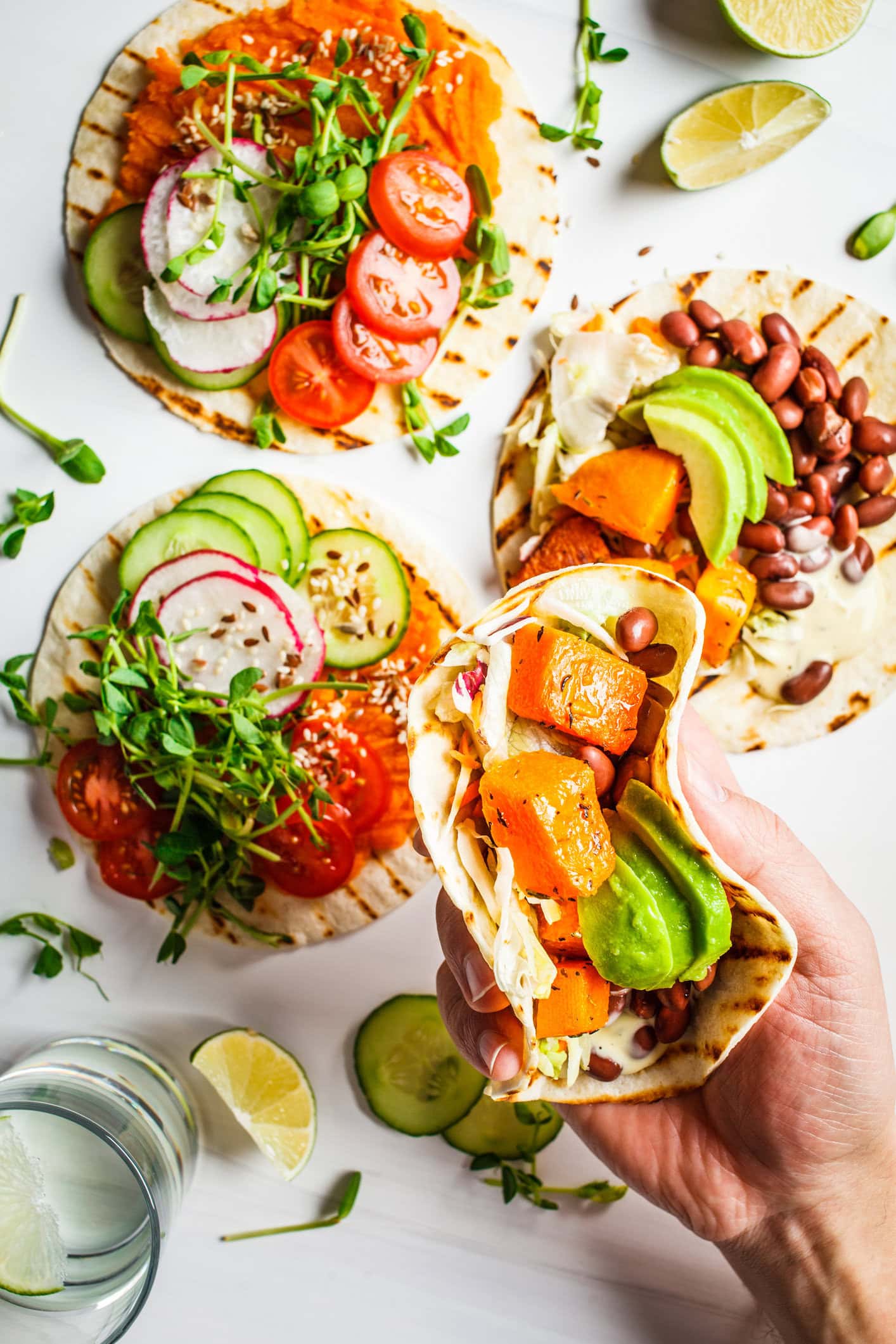
On a plant-based diet, you can enjoy a diverse array of delicious and nutritious foods that will delight your taste buds and support your health.
Fresh fruits, vibrant vegetables, whole grains, legumes, nuts, and seeds offer a wealth of flavors and textures to explore. From hearty bean soups like our vegan Mexican tortilla soup and crisp salads like this spinach fruit salad to savory quinoa dishes like my quinoa chickpea salad and sweet dairy-free fruit smoothies, there’s no shortage of tasty and satisfying options. Embracing a plant-based diet opens up a world of wholesome, plant-powered foods that can be both exciting and nourishing!
- Whole Grains – This group includes brown rice, millet, oats, barley, corn, bulgur, and all products made from whole grains including bread, cereals, pasta, and more. Whole grains are filling but have very little fat. In countries where whole grains are staples, such as rural Asia, diabetes, heart disease, and certain cancers, are much less common than in the States and Europe.
- Legumes – This group includes beans, peas, and lentils. They are hearty, high-protein foods that are rich in calcium, iron, cholesterol-lowering soluble fiber, and even traces of omega-3 fatty acids.
- Vegetables – These foods are loaded with vitamins and minerals, are very low in fat, and like all plant foods, have no cholesterol at all.
- Fruit – These are vitamin-rich and have no cholesterol. They do have natural sugar but are low on the glycemic index, except for watermelon and pineapple.
Whole food plant-based food list
A fantastic way to kick off your journey is by creating a whole-food, plant-based shopping list. This helps keep you focused and prevents those sneaky extra expenses from adding up. Think of this guide as your cheat sheet for starting a healthy, plant-based diet—essentially a peek into my pantry.
Remember, there’s no rush to grab everything at once; just start with the basics and build up as you go! I do not keep all these varieties of veggies and fruit in my kitchen all the time. Who has that kind of room? I just want to give you an idea of what is available.
Grains

On a plant-based diet, whole grains are an excellent source of essential nutrients and fiber, helping to keep you full and satisfied while supporting overall health. They provide a steady release of energy and help maintain digestive health, making them a key component of a balanced and nutritious plant-based lifestyle.
- Old fashion oats
- Rice (brown, Jasmin, wild, etc.)
- Bulgur (a wheat grain that is great for adding texture to meatless dishes)
- Quinoa
- Barley (I add to soups and stews)
- Millet (I add to soups and stews)
- Cornmeal (for cornbread)
- Grits
- Unbleached flour (whole wheat, spelt, brown rice, barley, etc.)
- Whole-wheat pastry flour
- Pasta (whole wheat, spelt, artichoke, quinoa, etc.)
- Bread (rye, pumpernickel, spelt, etc.)
- Tortillas (corn & whole grain flour)
Legumes
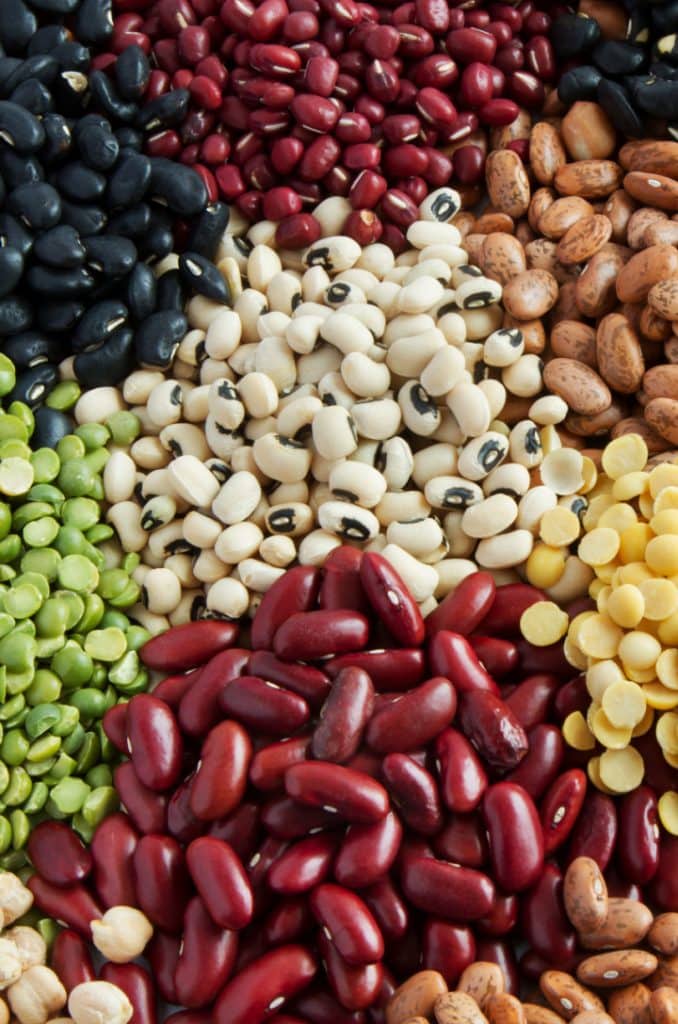
Legumes are a protein powerhouse on a plant-based diet, offering a rich source of protein, fiber, and essential nutrients like iron and potassium. They help maintain muscle mass, support digestive health, and keep you feeling full and energized, making them a crucial part of a well-rounded plant-based meal plan.
- Kidney beans
- Pinto beans
- Garbanzo
- White beans (navy, cannellini, Great Northern, etc.)
- Black beans
- Black-eyed peas
- Green peas
- Split peas
- Edamame (soybean, fresh or frozen)
- Lentils (red, green, brown, etc.)
- Nuts
- Many, many more…
Vegetables

Vegetables are a cornerstone of a plant-based diet, packed with vitamins, minerals, and antioxidants that support overall health and well-being. They provide essential nutrients while being low in calories, helping to boost your immune system, improve digestion, and keep you feeling vibrant and energized.
- Potatoes (red, Russet, Yukon gold, etc.)
- Sweet potatoes
- Tomatoes
- Carrots
- Radishes
- Artichokes
- Lettuces (Romaine, endive, butterhead, loose-leaf, etc.)
- Other greens (spinach, collards, etc.)
- Cabbages (purple, green, Napa, Bok Choy, etc.)
- Broccoli
- Cauliflower
- Brussels sprouts
- Bean sprouts
- Leeks
- Garlic
- Ginger
- Bell peppers (red, yellow, green)
- Pepper (the hot ones)
- Onions (purple, yellow, white, etc.)
- Corn
- Cilantro
- Parsley
Fruits

Fruits are a delicious and nutritious staple of a plant-based diet, offering a rich source of vitamins, minerals, and natural antioxidants. They help support immune function, provide essential hydration, and offer a natural sweetness that can satisfy cravings while keeping your diet balanced and healthful.
- Apples
- Pears
- Oranges
- Grapes
- Pineapple
- Nectarine
- Peach
- Bananas
- Berries (strawberries, blueberries, raspberries, etc.)
- Kiwi
- Avocado
- Lemon
- Lime
- Melons (cantaloupe, watermelon, honeydew, etc.)
- And many, many more
Condiments
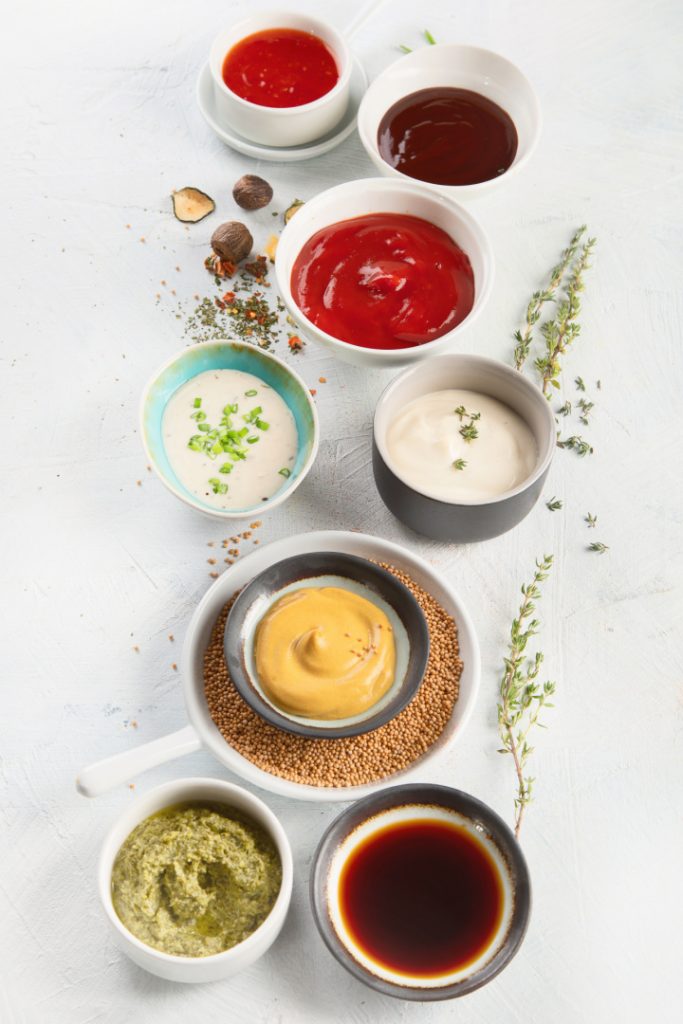
Healthy condiments on a plant-based diet, such as different varieties of vinegar, natural sweeteners, and low-sugar sauces, enhance flavor while adding nutritional benefits like antioxidants and essential vitamins. They allow you to enjoy a variety of tasty dishes without compromising on health, making meals both satisfying and nutritious.
- Balsamic vinegar
- Apple cider vinegar
- Rice vinegar
- Red wine vinegar
- Amino acids
- Tahini (this is a sesame paste. Usually found in the peanut butter section)
- Maple syrup
- Blackstrap molasses
- Dijon mustard
- Yellow mustard
- Ketchup
- Soy sauce or tamari
- Worcester sauce (make sure it doesn’t have anchovies)
- Vegetarian ‘oyster’ sauce
- Nutritional yeast
- Baking powder
- Baking soda
- Corn starch or arrowroot powder (for thickening)
- Vanilla
- Vegan, low-fat soup cups (Dr. McDougall’s brand)
Spices & Herbs
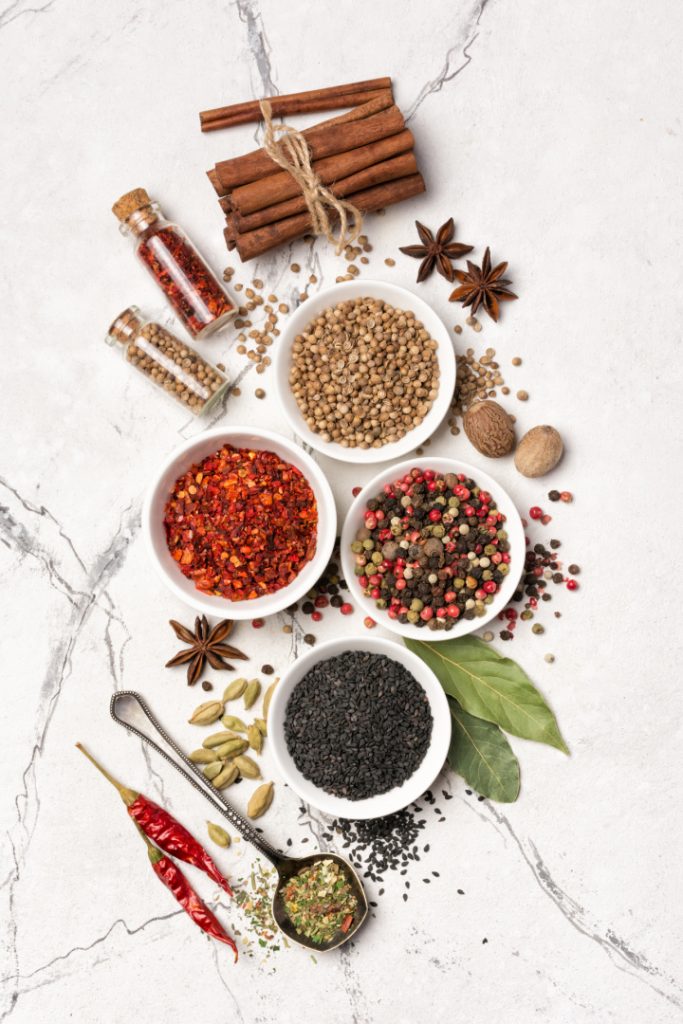
Spices and herbs are fantastic for a plant-based diet as they not only elevate the flavor of your meals but also pack a punch of antioxidants and essential nutrients. They can help boost metabolism, support digestion, and add a variety of health benefits, making your meals both tasty and nourishing.
- Italian seasoning
- Garlic powder
- Onion powder
- Paprika and smoked paprika
- Peppercorn mélange
- Turmeric
- Tarragon
- Cayenne
- Chili powder
- Cumin
- Steak seasoning
- Bay leaf
- Parsley
- Basil
- Oregano
- Red pepper flakes
- Just to name a few…
In this article on the top 15 spices for your plant-based kitchen, you’ll discover how these flavorful staples can transform your dishes while enhancing their nutritional value. From boosting flavor to providing health benefits, these spices are essential for creating delicious and wholesome plant-based meals.
Canned Foods
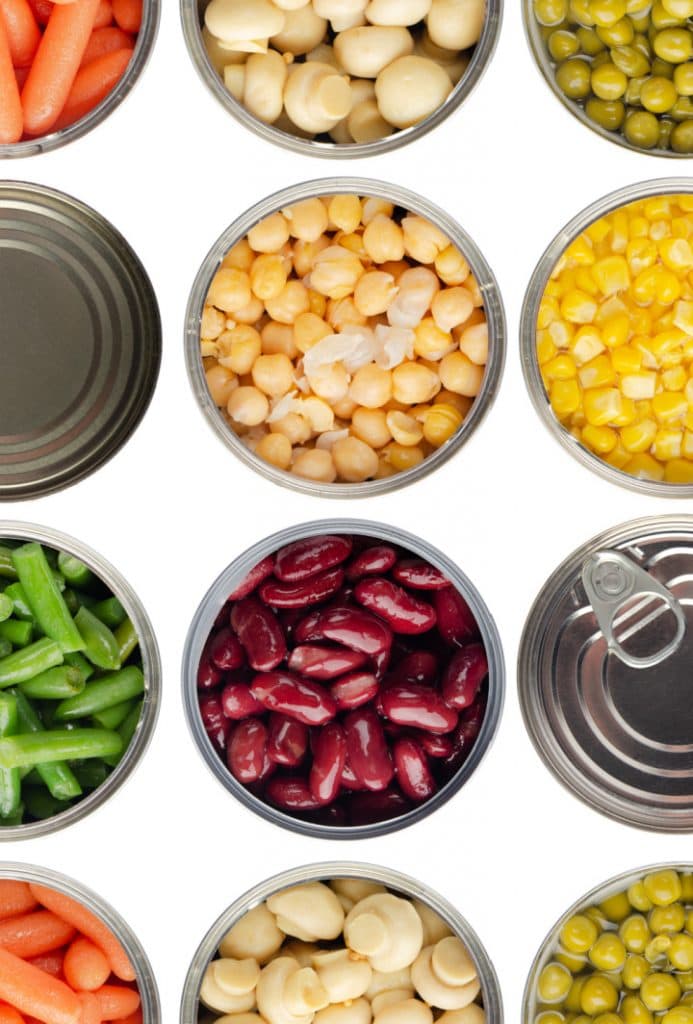
Canned vegetables and fruits are a convenient and nutritious addition to a plant-based diet, offering essential vitamins, minerals, and fiber while being shelf-stable. They provide a quick way to enjoy the benefits of produce year-round, making it easier to maintain a healthy and balanced diet.
- Beans
- Tomato paste
- Tomato sauce
- Artichoke hearts
- Water chestnuts
- Chipotles
- Cream corn
- Pimentos
- Baby corn
- Vegan low-fat soups
- Veggie broth (Making Veggie Stock from Scraps)
- Fire-roasted tomatoes
- Apple sauce
Refrigerator Foods
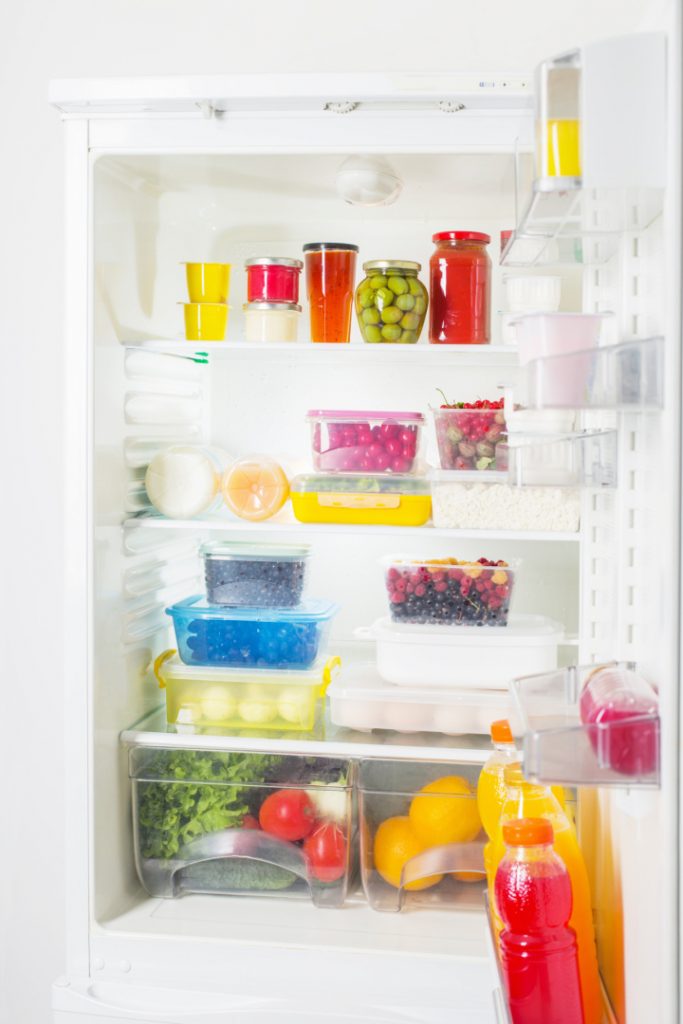
Refrigerated foods like hummus and tofu are excellent staples for a plant-based diet, providing rich sources of protein, healthy fats, and essential nutrients. They add variety and convenience to your meals, making it easier to maintain a balanced and satisfying plant-based lifestyle.
- Hummus
- Plant-based milk (soy, almond, rice, etc.)
- Tofu (firm, extra firm, silken)
- Tempeh
- Seitan
- Lemon juice
- Flax meal
- Salsa
Frozen Foods

Frozen foods are a fantastic option for a plant-based diet, as they preserve the nutritional value of fruits and vegetables while offering convenience and variety. They make it easy to incorporate a wide range of healthy, nutrient-dense ingredients into your meals, ensuring you have access to wholesome options year-round.
- Ezekiel bread (they are kept in the freezer section of many grocery stores)
- Hash browns
- Fruits (like berries, etc.)
- Chopped spinach
- Corn nibbles
- Green peas
- Mixed veggies
- Stir fry veggies
- Pizza crusts: Sami’s Bakery Millet & Flax
- Whole-grain bagels
- Whole-grain buns (for bean burgers and carrot hot dogs)
Sweeteners
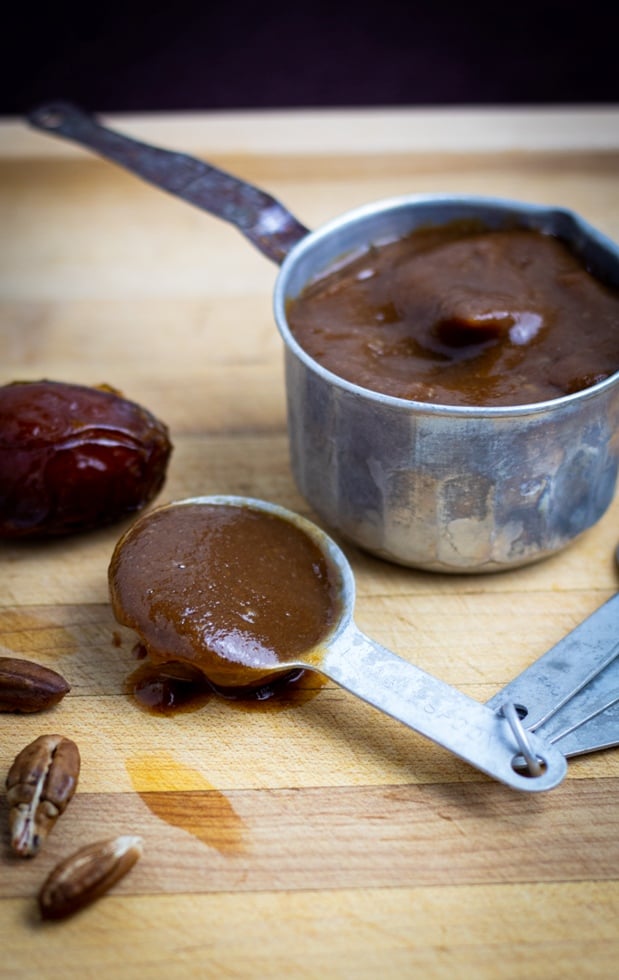
Healthy sweeteners, like maple syrup, agave nectar, and dates, are excellent choices for a plant-based diet as they offer natural sweetness while providing additional nutrients and less refined sugars. They help satisfy your sweet cravings in a more wholesome way, enhancing the flavor of your dishes without compromising your dietary goals.
- Homemade date paste and raw dates
- Maple syrup
- Date syrup
- Granular less refined sugars like sucanat, pure cane, maple, date, and others
- Agave nectar
- Honey (if not pure vegan)
- Molasses
Vegan Meat Alternatives

Healthy meat alternatives are a great addition to a plant-based diet, offering high-quality protein and essential nutrients while providing satisfying textures and flavors. These options, such as tofu, tempeh, and seitan, make it easier to enjoy a diverse and balanced diet without sacrificing taste or nutrition.
- Tofu
- Tempeh
- Soy curls
- Seitan
- Lentils
Easy Plant-Based Recipes
Here’s a tasty sneak peek at some delicious plant-based recipes you can whip up with the ingredients I’ve just mentioned. Get ready to dive into a world of flavor with these scrumptious creations!
For those of you new to the whole food plant-based lifestyle, we’ve created a FREE 7-Day Plant-Based Menu Planner to help you get started!
Breakfasts

- Tofu Breakfast Scramble
- Banana Oat Dairy-Free Pancakes
- Applesauce Cinnamon Vegan Muffins
- More Plant-Based Healthy Breakfasts
Main Dishes
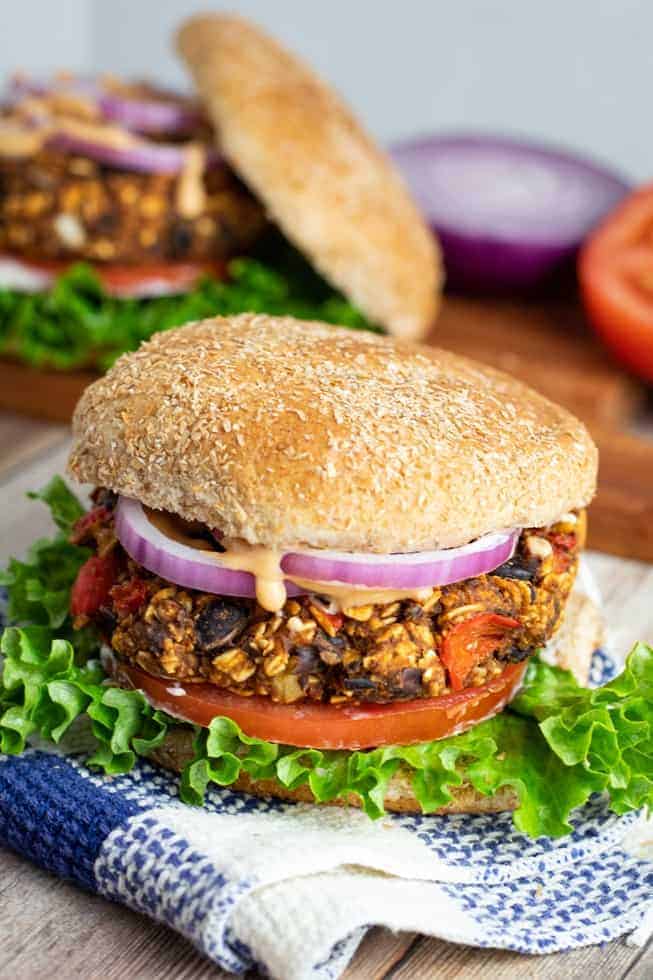
Sides
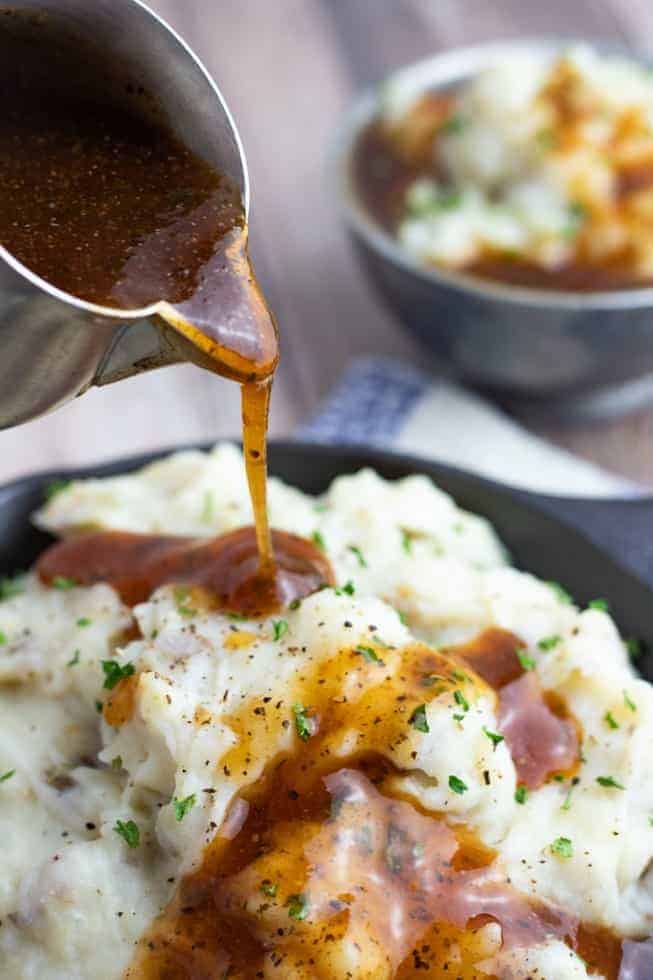
- Dairy-Free Mashed Potatoes
- 10-Minute Vegan Brown Gravy
- Veggie Pasta Primavera
- More Plant-Based Sides
Soups
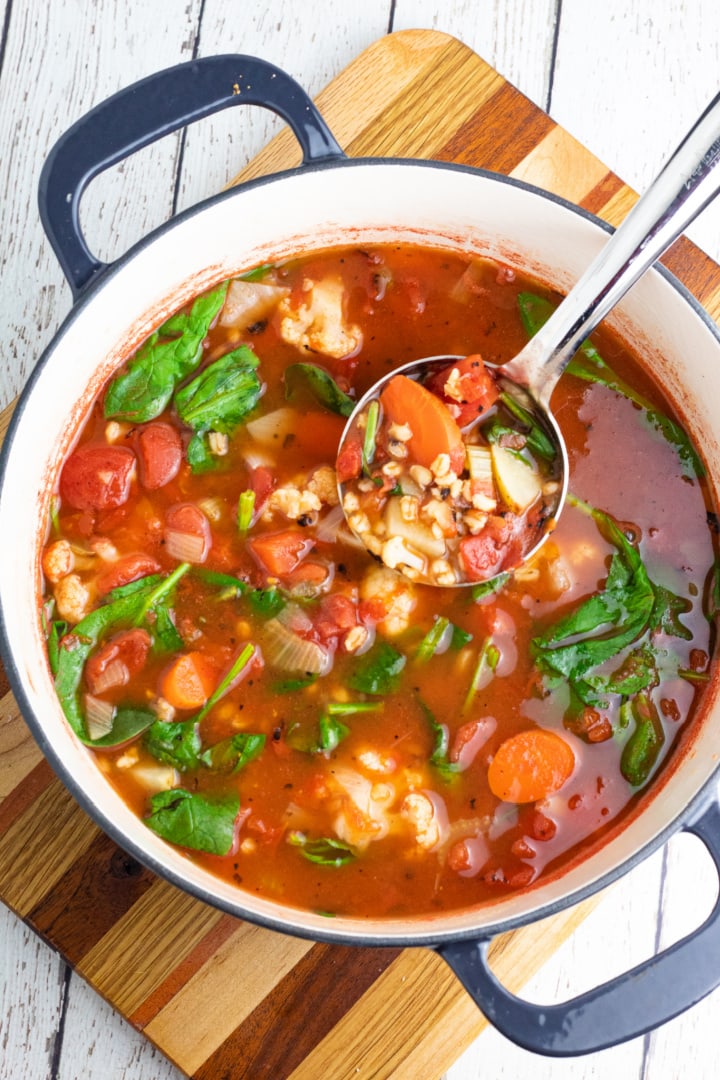
- Barley Vegetable Soup
- Creamy Dairy-Free Butternut Squash Soup
- Hearty White Bean Soup
- More Plant-Based Soups
Desserts
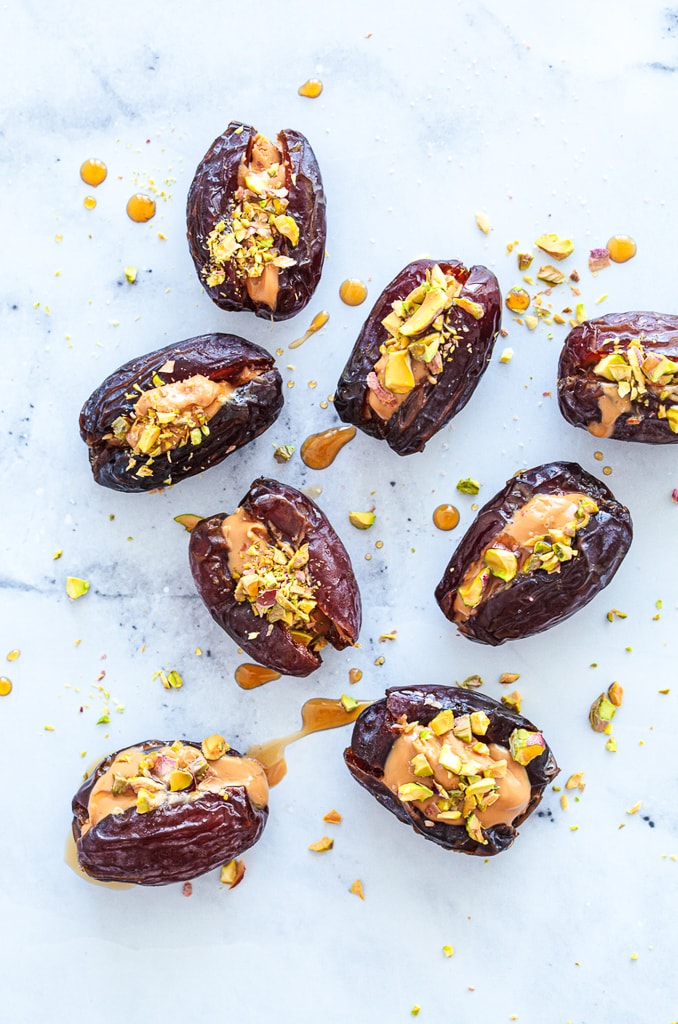
The Bottom Line
In conclusion, I trust that this comprehensive plant-based diet food and grocery list will serve as a valuable resource for your journey towards a healthier lifestyle. It is designed to simplify your shopping experience, ensure you have all the essential ingredients on hand, and support you in preparing delicious, nutritious meals. By following this guide, you’ll be well-equipped to embrace a plant-based diet with confidence and ease.
Grocery List PDF Download
This is a link to a downloadable Whole Food Plant-Based Diet Grocery List PDF. If meal planning is something you need a little help with, this article Plant-Based Meal Planning 101 can assist with that too.
This is an excellent 15-minute video with plant-based nutrition expert, Jeff Novick, on grocery store shopping. And, these are his 10 Simple Plant-Based Meals for Beginners.
Helpful Articles:
- Plant-Based Guide for Beginners
- Plant-Based Starter Kits (includes a book and a DVD set of lectures from Dr. Neal Barnard)
- How to Start a Plant-Based Diet: Fast Way vs Slow Way
- What is a Plant-Based Whole Food
- Plant-Based Meal Planning 101
- Jeff Novick’s 10 Simple Recipes in Less than 20-Minutes
- Whole Harvest: Plant-Based Meal Delivery Service Review
I hope this plant-based diet shopping list will help get you started well on your new journey. It will be a wonderful adventure! Happy cooking and health everyone!
*Originally published November 09, 2015.
About Terri Edwards
Hi guys! I am the content creator behind EatPlant-Based and a licensed Food for Life instructor with the Physicians Committee for Responsible Medicine. I am passionate about sharing healthy recipes and tips to empower others to get healthy. I’m so glad you’re here! Read More…

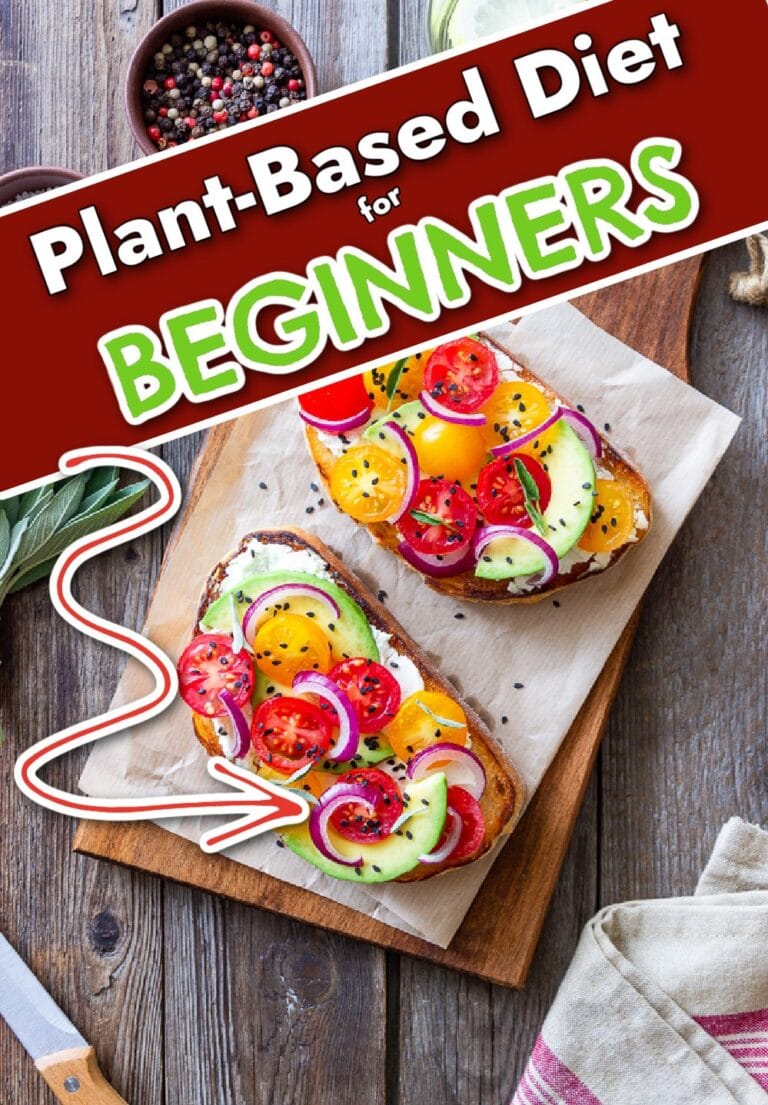
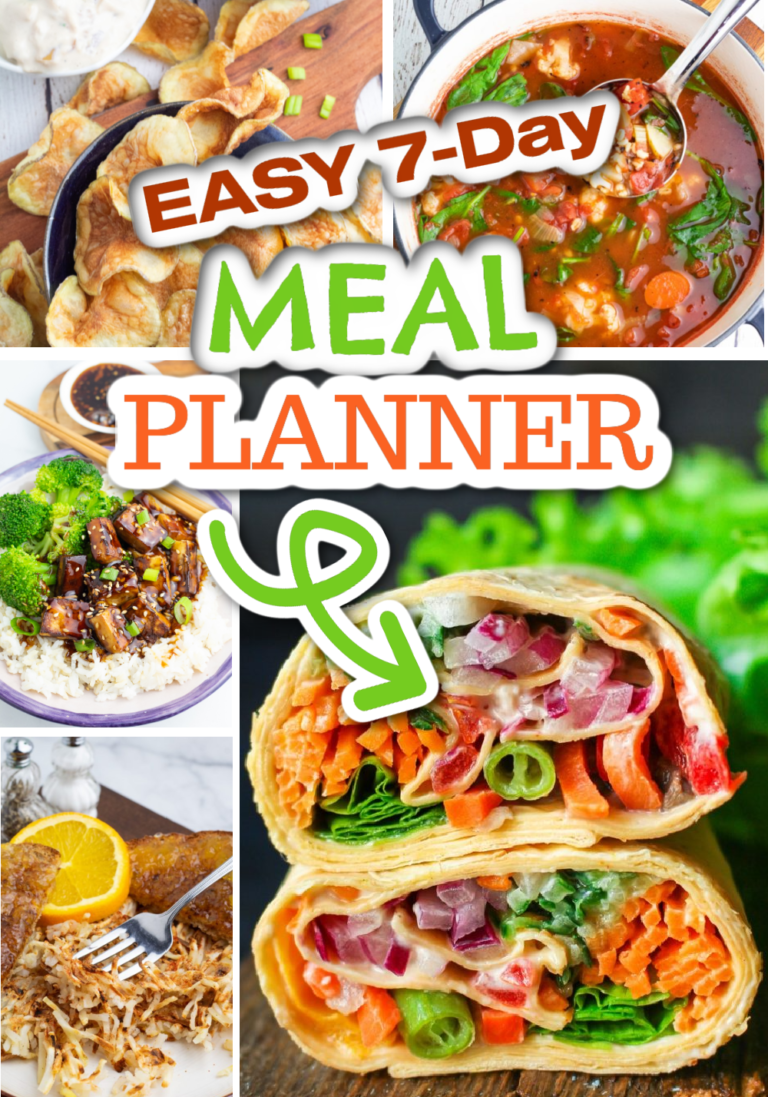
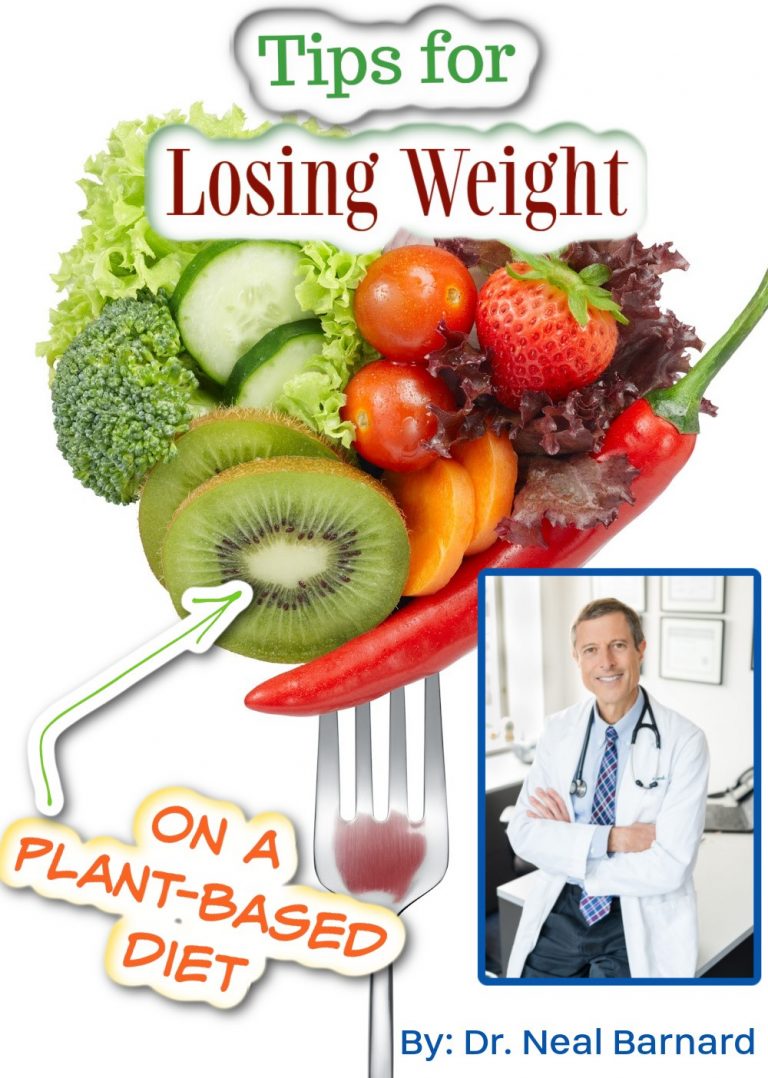
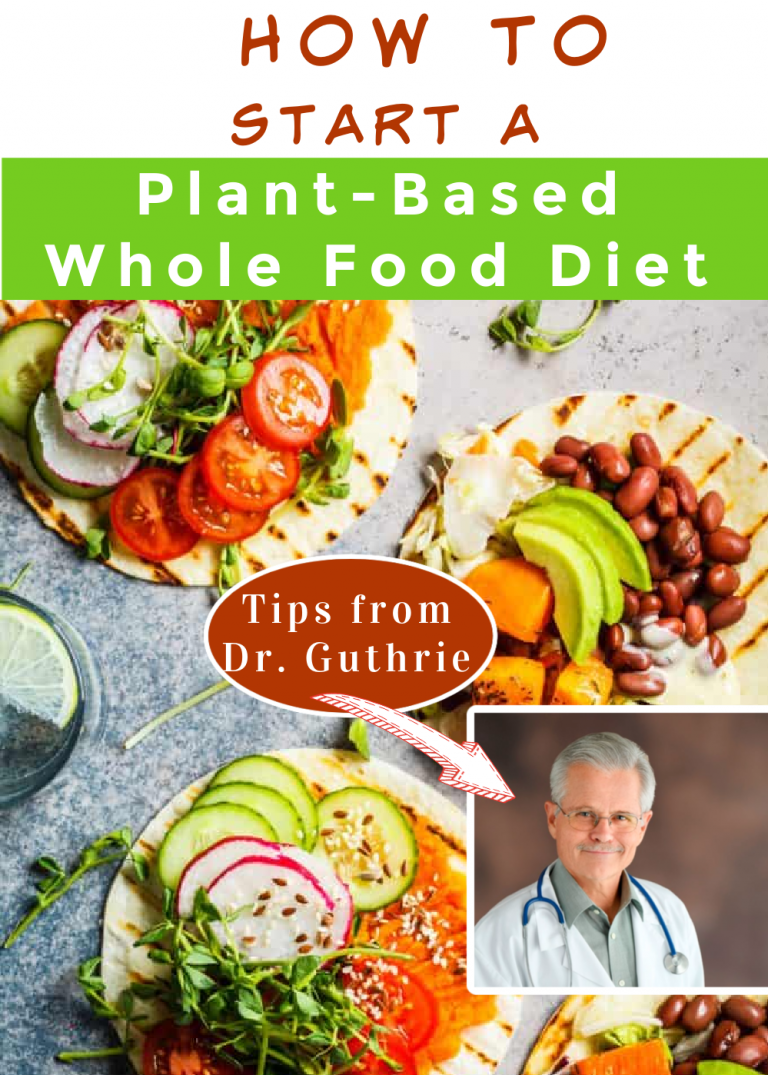
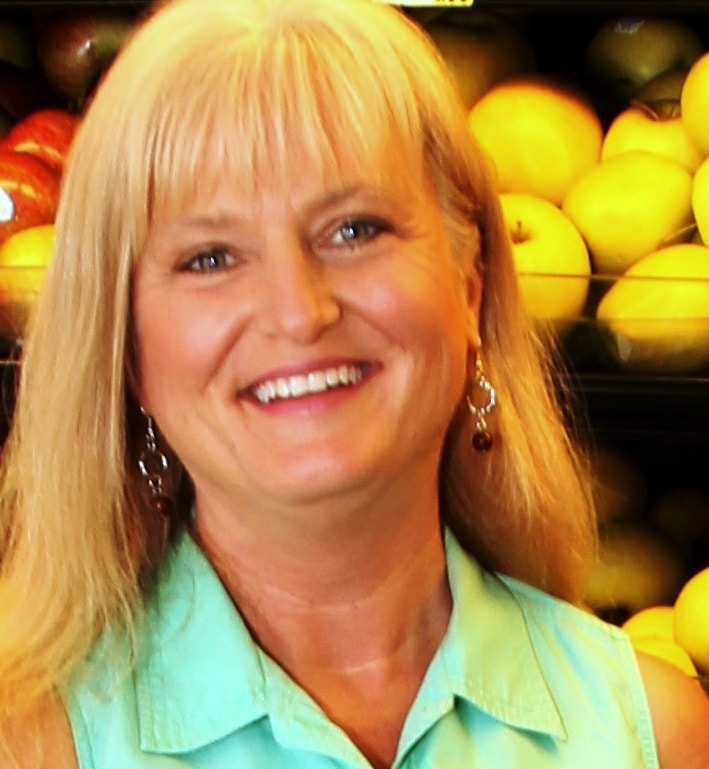

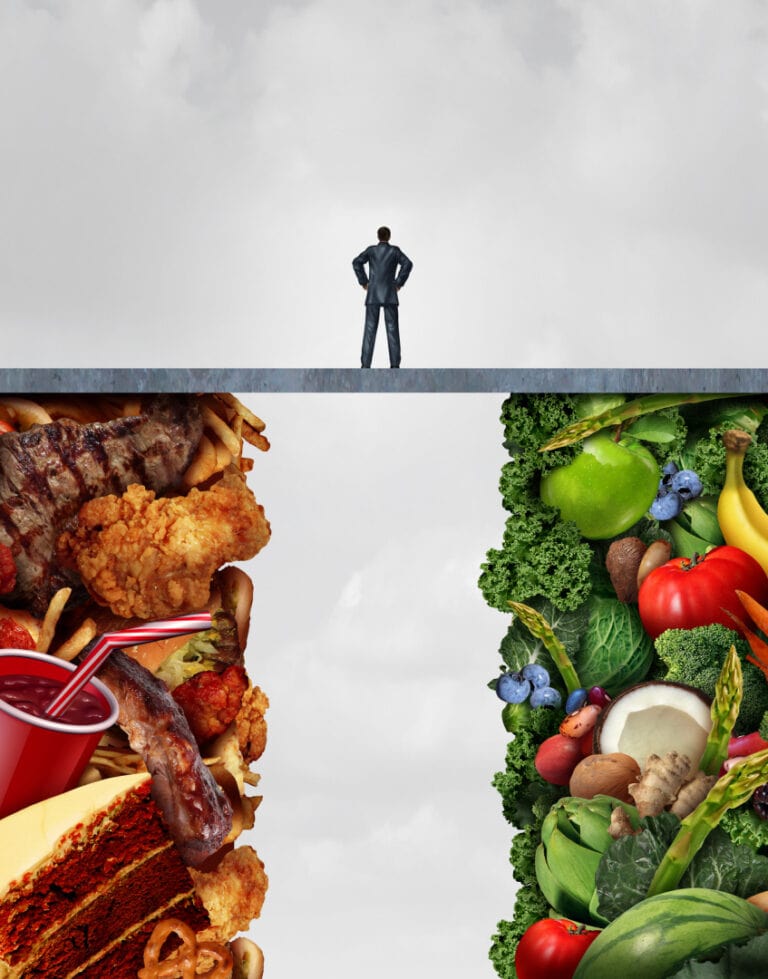
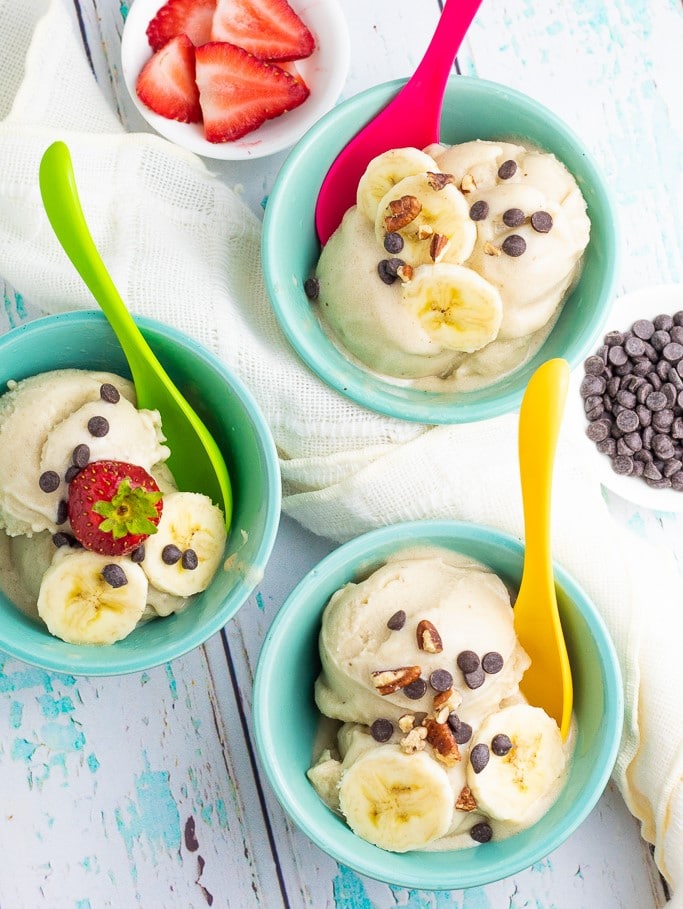
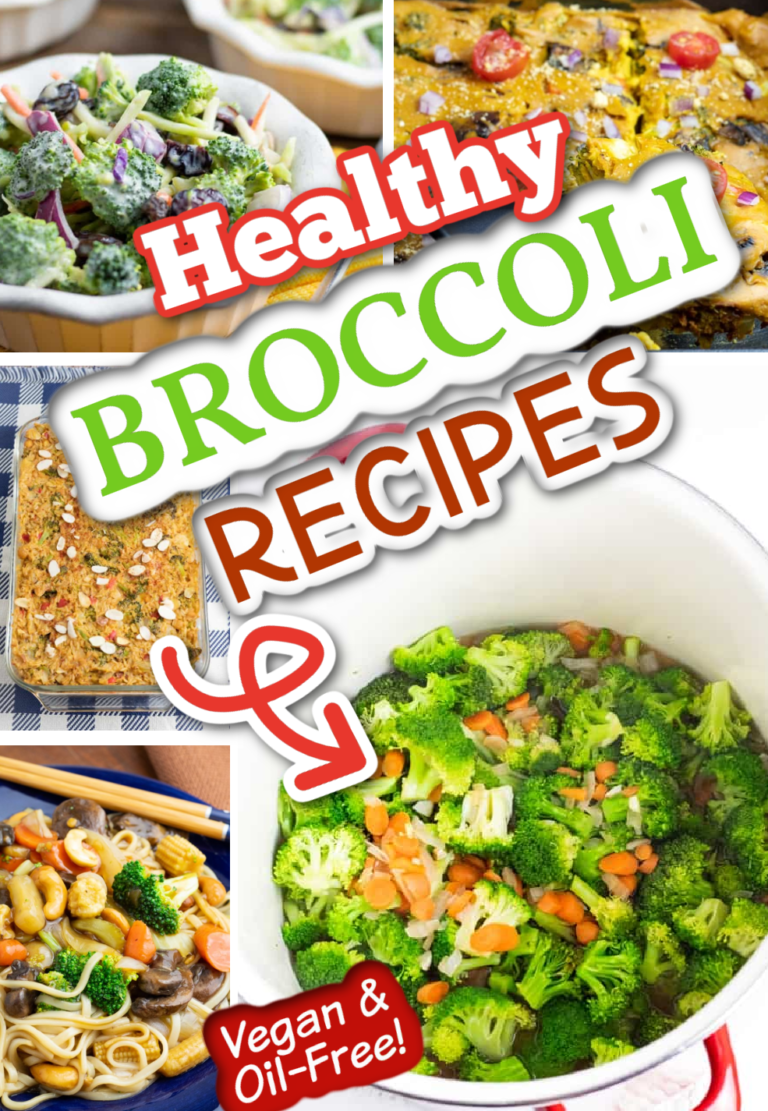
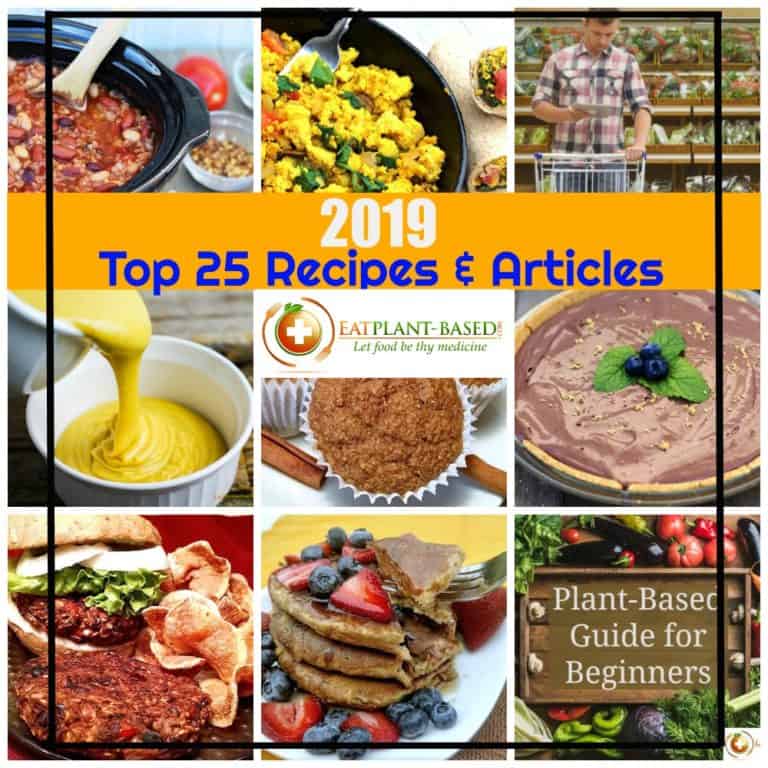
Felt like I’d hit the mother load when I found your website/ you tube. So generous with gazillion info where as other thrive to sell info or services most of the time. So grateful!
I’ve been on this health journey for about two years now. My husband just join me on my health quest with a whole food plant base life style. I’m happily adjusting to cook for two.
Found a tone of helpful stuff to use plus a super loaded knowledge bank!
Hi Madeleine- How wonderful that your husband has decided to join you on the journey! I am so happy that you found my website and YouTube channel. Hopefully, you’ll find lots of helpful information. 🙂
God Bless You and Thank You for such good information on Plant Base Diet. I have suffered with Fibromyalgia since 1997. I knew I had to change my diet. This is my road to recovery slowly but surely! Thank You
Hi Rev Debra- I am so excited for you and your new plant-based journey. May you find blessings and healing around every corner!
Do you have tips for don’t of these? Like I know hummus typically has oil in it. And what do you do with hummus? Use it as a dip for vegetable? I’ve been wanting to try it, but u don’t know what to do with it! 😀
Hi Meg- We love hummus and make a lot of different flavors of it completely oil-free. It is great as a dip for vegetables, crusty bread, and crackers. And, it’s a perfect spread on sandwiches and wraps. Chocolate hummus is what I like to dip apple slices and strawberries in. This article with recipes should help. https://eatplant-based.com/5-oil-free-hummus-recipes/
I can not find the pdf link to the grocery list for plant-based diet beginners
The PDF link to the grocery list is near the very bottom of the page. Here’s a direct link to it. Hope it’s helpful. https://eatplant-based.com/wp-content/uploads/2015/05/Whole-Food-Plant-Based-Diet-Grocery-List-PDF-.pdf
I love your site. It makes me feel healthy just by being here. The before and after stories are so inspiring.
My issue being plant based is breakfast. I’m the hungriest in the morning. Oatmeal for breakfast doesn’t do it for me I’m hungry in an hour.
Can you do a segment on breakfast?
Jackie, I am so glad you found my site and that it’s inspiring you. That’s wonderful news! For breakfast ideas, check out my Breakfast Index here https://eatplant-based.com/plant-based-breakfasts/
Is there such a thing as whole foods peanut butter and jam? Thanks!
Natural peanut butter is just crushed peanuts, so it is considered whole food. I’m betting you could make your own jam with only fruit and its juice.